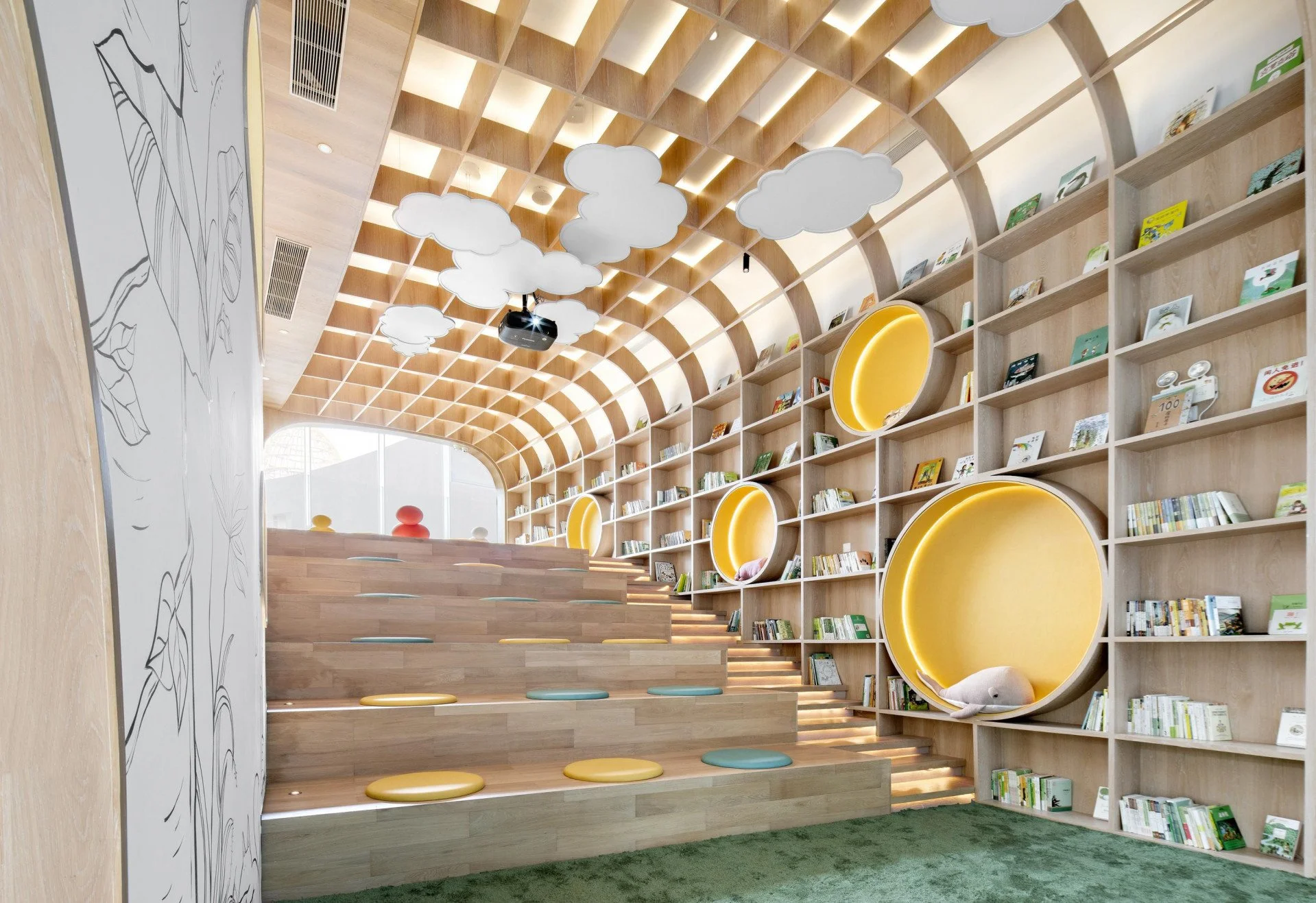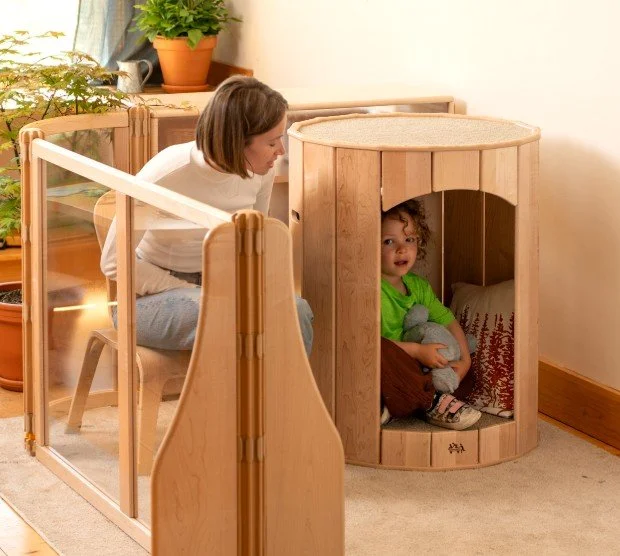Designing for the sensory child
As a mother of twins who had sensory issues when they were little, I learned firsthand how much the environment impacts a child’s mood, behaviour, and ability to self-regulate. The constant meltdowns, irritability, and overstimulation were exhausting—not just for them, but for me too. So I started making small changes to our home: softening the lighting, removing visual clutter, creating calm zones, and adding textures and materials that felt good. Slowly, things got better. Our home felt calmer, and so did we.
When a child feels good in a space…everything changes
Image: The Bugu Bugu Kids center. Frameweb.com
Before long, I found myself helping other tired, overwhelmed parents in my circle—friends and family who were going through the same thing. I began sharing how thoughtful design could support not just the kids, but the adults too. What started in my own home turned into a deeper interest in sensory-aware, child-focused design—something that applies just as much to homes as it does to childcare centres, therapy clinics, or pediatric waiting rooms.
I just love this cleverly designed ‘Calm Nest” for children who need to retreat when they get overwhelmed. Image: Communityplaythings.com
The truth is, kids experience the world very differently than adults. Their brains are still developing, their nervous systems are sensitive, and they’re still learning how to regulate themselves. Some kids are hypersensitive to light, noise, and touch. Others crave more stimulation—more movement, more texture, more sound. And a lot of kids fall somewhere in between. I found that even with twins in the exact same environment - they behaved differently to different stimuli.
When we design with this in mind—through the lens of sensory needs and child development—we can make spaces that feel calm, engaging, and supportive. We can create rooms that actually work for the way kids function. And when that happens, everyone—especially the adults—feels a little more sane.
Love this bedroom / playroom which ticks all the boxes. Image: fly-baby.net
Let’s talk lighting. Harsh overhead fluorescents? Not great. Soft, adjustable lighting and plenty of natural light? Much better. Think cozy reading corners, blackout curtains in nap zones, and a mix of task and ambient light for flexible use. Colour also matters. While we don’t have to shy away from it, it should be used intentionally. Soft blues, muted greens, and earthy tones tend to feel calming, while loud primary colours can overwhelm sensitive kids.
Sound is another big one. In both home and public spaces, using soft materials—like rugs, wall panels, and cushions—can help absorb noise and reduce that chaotic, echoey feeling. It’s a small change with a big impact, especially for kids who are easily triggered by noise.
And then there’s layout. Creating clear zones—whether in a playroom, classroom, or therapy room—helps kids understand what to expect. Maybe there’s an art station, a movement zone, a quiet nook, and a spot for group activities. These zones don’t have to be big or fancy, just clearly defined and consistent. It gives kids a sense of structure and comfort, which reduces anxiety and helps them settle more easily.
Recently, I also like to bring in neuroaesthetic principles—basically, how our brains respond to beauty and balance. This means soft shapes, a sense of rhythm in how the space is laid out, natural materials like wood or cotton, and even a view of nature or some plants. These things help regulate the nervous system and make the space feel good—even if we don’t consciously notice them.
And finally, let’s talk about real life. Spaces need to be livable—easy to clean, safe, adaptable, and organized. Rounded edges, non-toxic finishes, safe storage, and systems that kids can actually use themselves go a long way. Whether it’s a family playroom or a shared classroom, when kids can help tidy up and find what they need, it fosters independence and cuts down on chaos.
I would also like to introduce two design options you might find useful in your life - Wellness at Home Consultation sessions and Wellness at Work Consultation sessions for schools, childcare facilities, medical establishments, treatment rooms and more.
Wellness at Home (and Work)- Neuroaesthetic Wellness Consultation Sessions and Design
I am so excited to introducing our new (Summer 2025) Wellness at Home sessions. The Wellness at Home/ Work Session is a 60-minute, one-on-one consultation where we look at your space through the lens of neuroaesthetics and biophilic design. Whether it's your living room, home office, or living areas or your business —we’ll help you create a space that’s aligned with how you want to feel.
If after the consultation you would like us to propose and work on a design, I would be happy to!
Who’s it for?
Burnt-out professionals who need a home or office that helps them decompress
Business owners who want their employees to feel more creative and improve produtivity
Families wanting more peace and connection in their shared spaces
Clients navigating life transitions (empty nesters, retirees, new parents)
Anyone who wants their home or workplace to support—not drain—their energy
You'll get:
A personalized design review with wellness-focused recommendations
Tips for lighting, layout, colors, and textures that support emotional ease
A curated summary of your space’s strengths and opportunities
Optional styling and product recommendations
A follow-up to check in on your progress
Available virtually or in person (for clients in the Nelson, BC area), this is a powerful yet approachable way to start designing with intention.
Final thoughts…
Designing spaces for children is a chance to support their growth in a really tangible way. When we’re intentional—thinking about how kids actually experience the world—we can create environments that help them feel safe, calm, and curious. Whether it’s a corner of your home, a busy childcare centre, or a therapy room, good design has the power to ease the daily stress and bring more joy and connection into everyday routines—for both kids and the grownups who love and care for them.
Because the best kind of home? Is the one with happy children!


